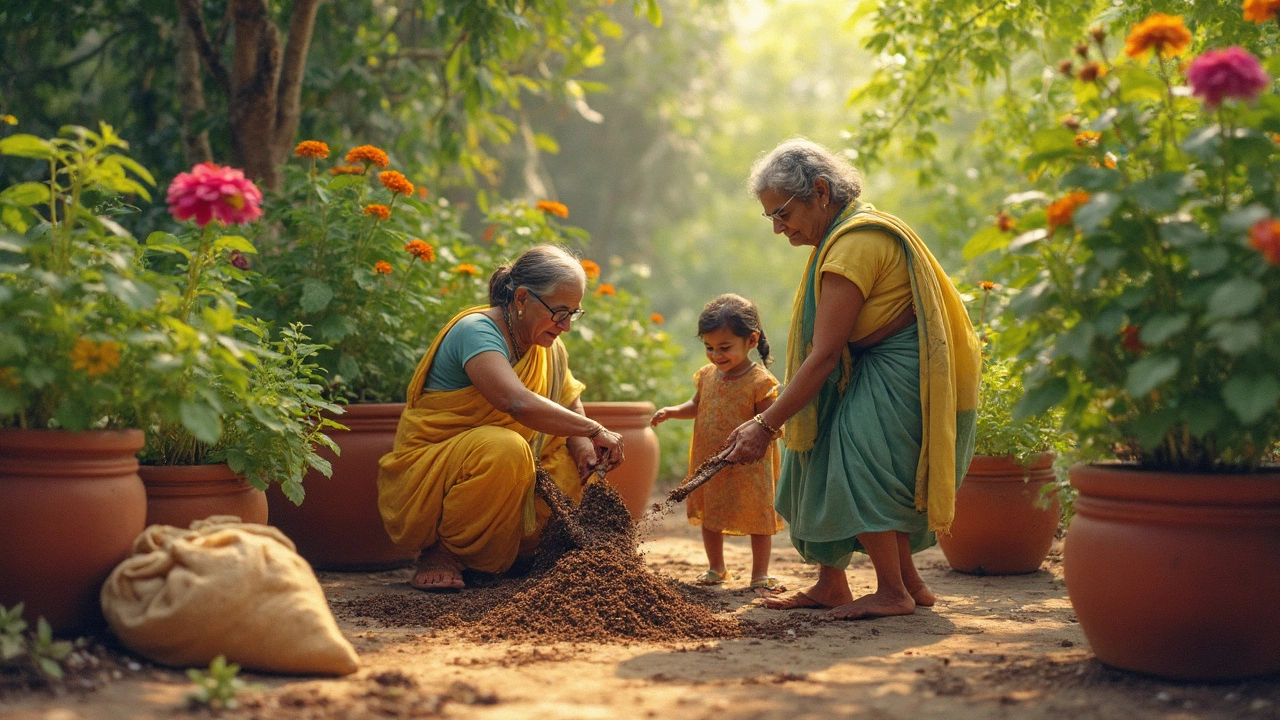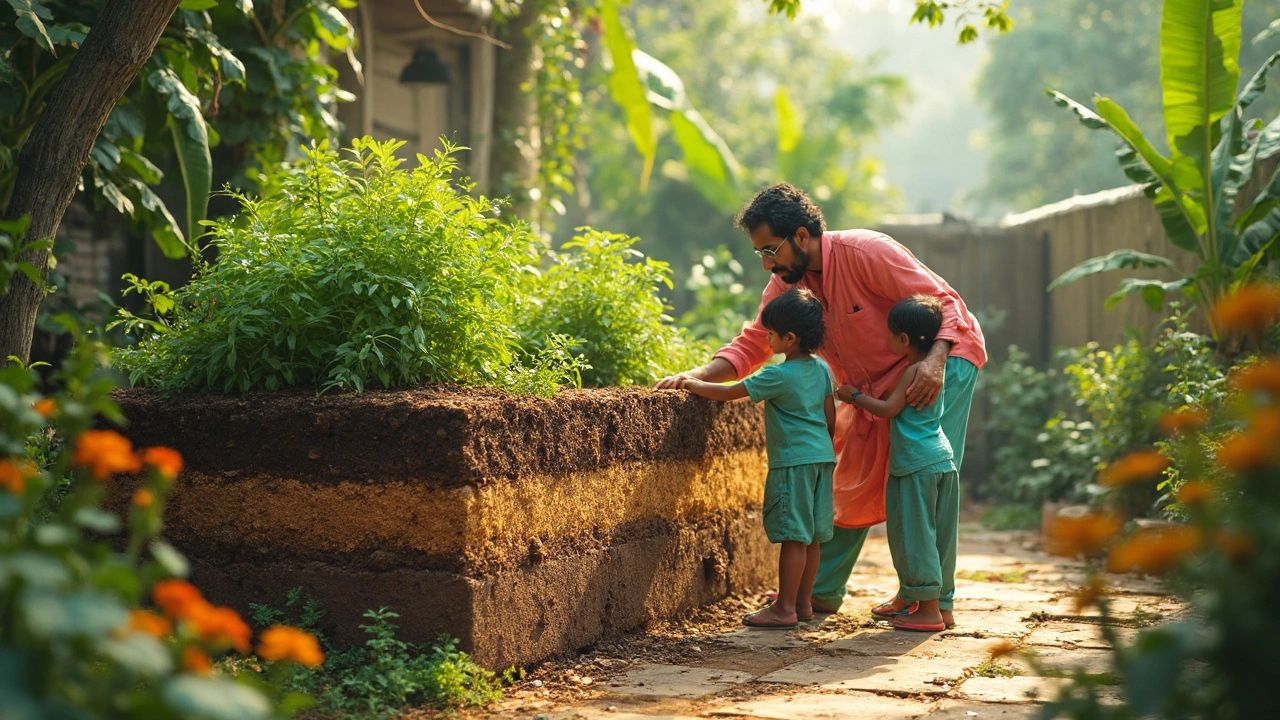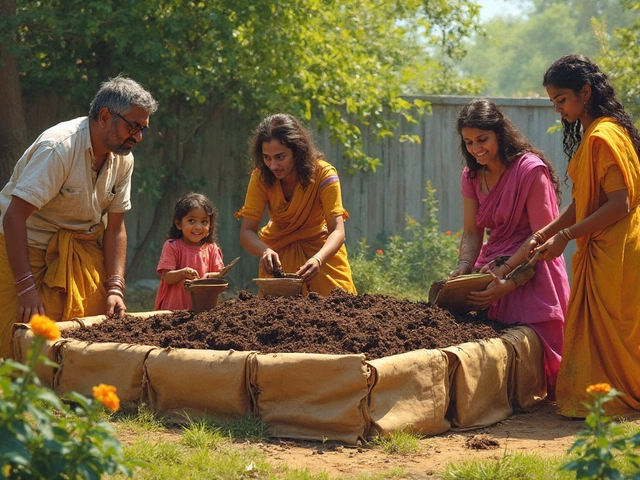Garden Soil Improvement: Simple Steps for Healthier Plants
Did you notice your veggies looking weak or your flowers wilting early? Most of those problems start right under your feet – the soil. The good news is you don’t need fancy chemicals or expensive equipment to turn that soil around. A few everyday additions and a bit of planning can make your garden soil lively, well‑drained, and full of nutrients.
First, get a feel for what you’re dealing with. Grab a basic soil test kit from any garden centre and check pH and texture. If the soil feels sticky when wet, it’s heavy clay; if it crumbles easily, it’s sandy. Knowing this helps you choose the right amendment without guesswork.
Loosen Heavy Soil Quickly
Heavy, compacted soil suffocates roots and slows water movement. One of the easiest fixes is to mix in organic matter. Spread a 2‑inch layer of well‑rotted compost or leaf mold over the area, then work it into the top 6‑8 inches with a spade or garden fork. Adding coarse sand (about 1 part sand to 4 parts soil) improves drainage, but avoid using fine beach sand – it can make the mix denser.
If you have access to gypsum, sprinkle a handful per square meter and work it in. Gypsum breaks up clay particles without changing pH, letting water and air reach roots more easily. After amending, water the bed well and let it settle for a week before planting.
Boost Soil Nutrition with Easy Additives
Organic matter does more than loosen soil; it feeds microbes that turn waste into plant‑available nutrients. Compost is the star here – aim for 20‑30 % of your soil volume. If compost is scarce, use well‑rotted farmyard manure or kitchen waste compost. For a quick nutrient boost, sprinkle a thin layer of bone meal or rock phosphate for phosphorus, and wood ash for potassium (but keep ash amounts low to avoid raising pH too much).
Cover crops are another low‑cost trick. Plant a fast‑growing green manure like mustard, sun hemp, or clover after your main crop. When you turn them into the soil, they add fresh organic material and improve structure. This works especially well in the off‑season, keeping the soil alive year‑round.
Don’t forget mulching. A 2‑inch layer of straw, dried leaves, or shredded coconut husk retains moisture, suppresses weeds, and slowly adds organic matter as it breaks down. Mulch also protects soil temperature, which is a big plus for Indian gardens that face hot summers and chilly winters.
Finally, keep an eye on drainage. If water pools after rain, create shallow trenches or raised beds to direct excess water away. A simple French drain – a perforated pipe wrapped in gravel – can solve chronic soggy spots without major excavation.
With these practical steps, you’ll notice stronger root growth, better yields, and plants that look greener faster. Soil improvement isn’t a one‑time job; it’s an ongoing habit. Add a little compost each season, rotate cover crops, and your garden will stay healthy for years to come.

How to Fix Hard Soil in Your Garden for Healthier Plants
Fixing hard soil in your garden is easier than you think. Discover proven tips, DIY tricks, and why your plants will thank you for it.

Worm Castings: The Secret Weapon for Better Garden Soil
Worm castings, often called nature's best fertilizer, can transform tired soil into a thriving home for your plants. They’re packed with nutrients, improve the soil structure, and even help your garden fight off pests and diseases. This article breaks down how worm castings work, why they stand out from other soil improvers, and how you can use them for bigger, healthier harvests. You'll pick up practical tips and learn some surprising advantages that worm castings have over standard compost. Get ready to see your plants grow stronger with less effort.

Best Materials to Put in the Bottom of a Raised Garden Bed for Healthy Soil
Not sure what to put at the bottom of a raised garden bed? This article breaks down the best materials to boost soil health, improve drainage, and keep weeds at bay. Learn the dos and don’ts for a thriving garden setup. Get practical tips that save time, money, and hassle. Create your raised bed right from the start.

How Often Should I Fertilize Tomatoes? Simple Timing for Big Harvests
Getting the timing right for fertilizing tomatoes can mean way more fruit and fewer plant headaches. This guide breaks down exactly when and how often tomatoes need feeding to keep them healthy and productive. You'll learn how to spot the signs that your tomatoes are hungry, and avoid common fertilizer mistakes that kill yields instead of boosting them. We’ll also look at quick, practical tips to handle real garden situations, like container tomatoes or tricky soils. Tomato success starts with the right feeding routine—and you’ll find all the need-to-know details here.
About
Soil Improvement, Gardening
Latest Posts


Most Sought-After Flowers in India's Blooming Market
By Alden Thorne Jan 12, 2025

Best Topography for Growing Rice: Key Insights
By Alden Thorne Feb 21, 2025

Best Months for Flower Blooming in India: Flower Seasons & Tips
By Alden Thorne Jul 27, 2025
